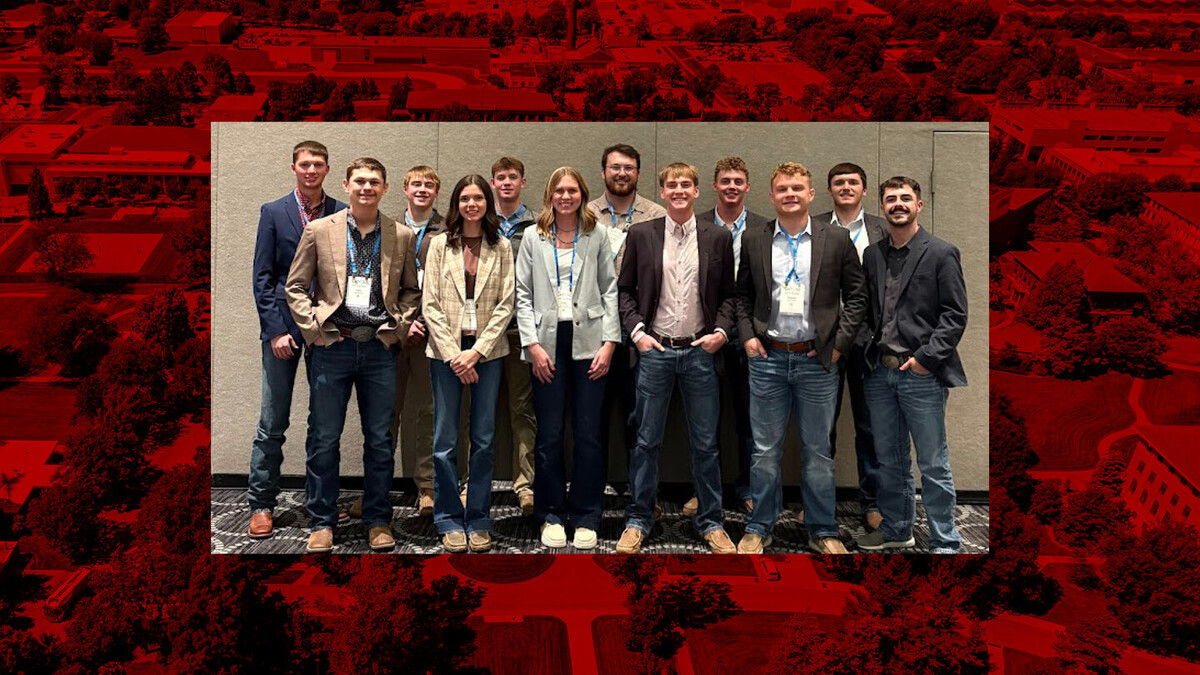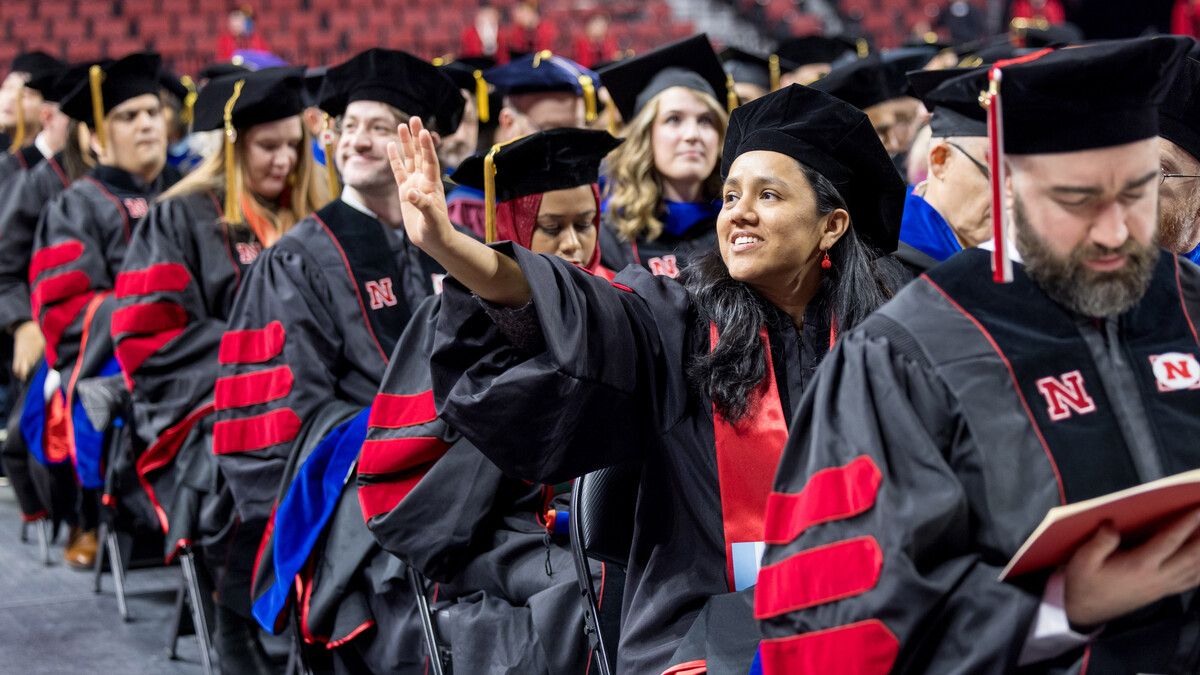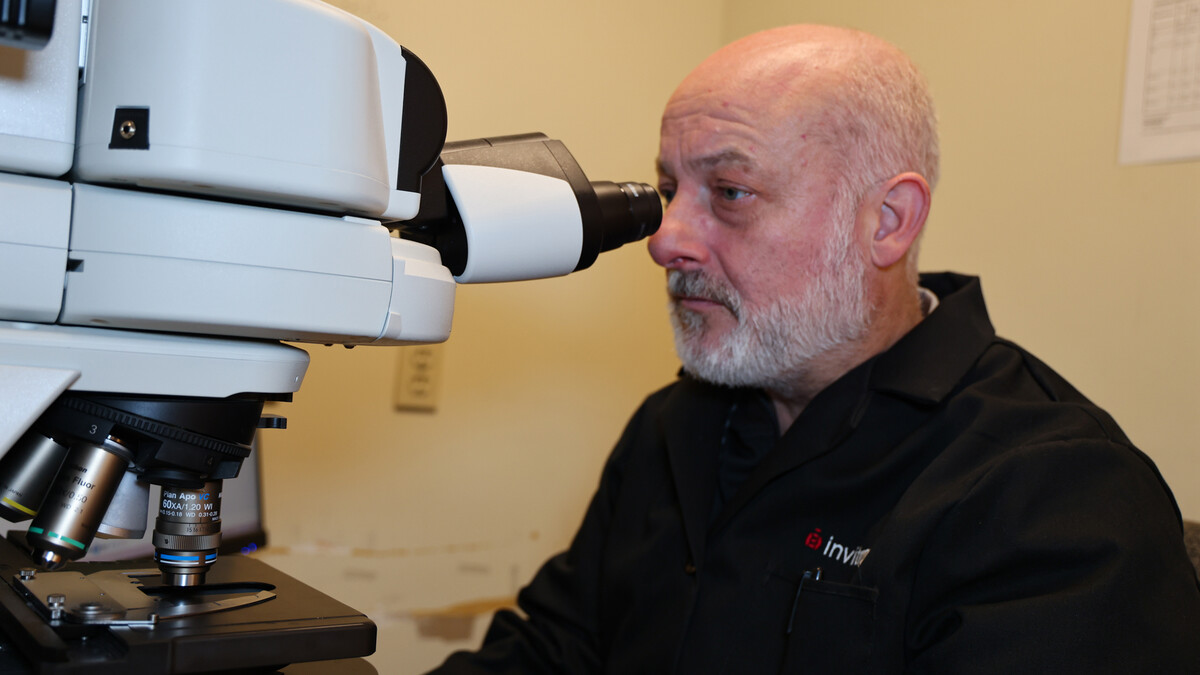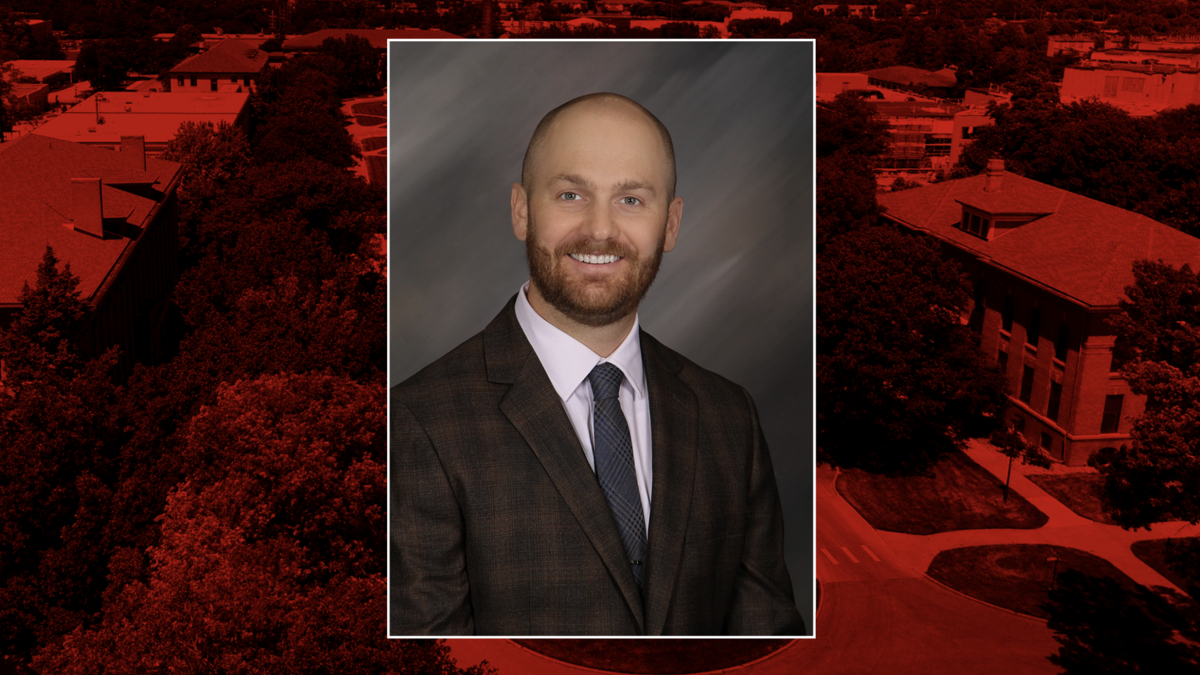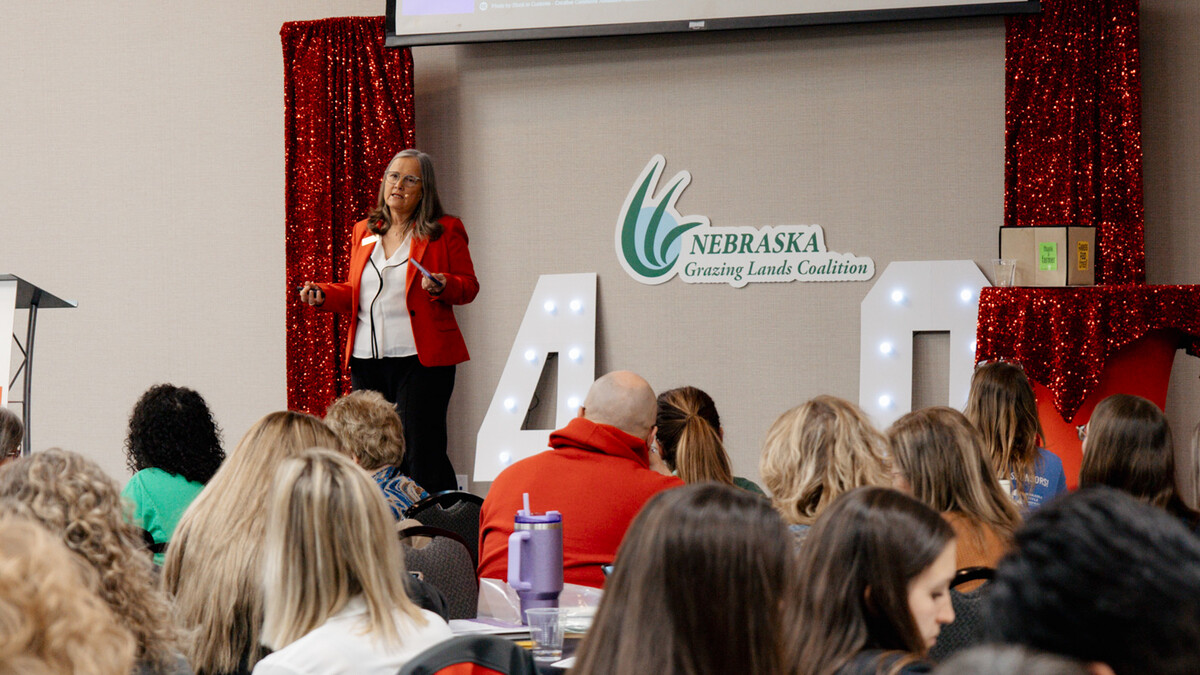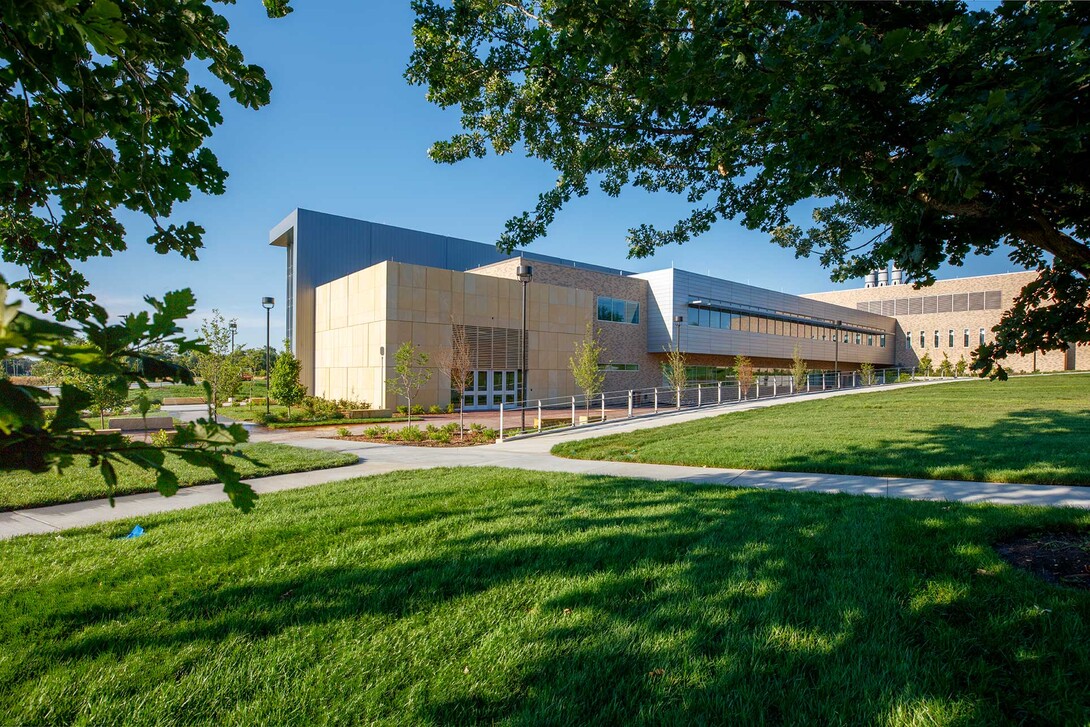
Recent and developing events have demonstrated an increasing need for robust disease surveillance, development of effective vaccines and strategies to ensure supply chain resilience.
Surges in avian flu in the U.S and African swine fever and foot-and-mouth disease (FMD) around the world have heightened public awareness of how a major outbreak in animal disease can cause wide-ranging harm. National security leaders and international animal health organizations are closely monitoring the outbreaks.
“Agricultural security is national security,” said Meghan Jackson, director for food, agriculture and environment security for the National Strategic Research Institute (NSRI) at the University of Nebraska and the Nebraska Institute of Agricultural and Natural Resources (IANR). “From ensuring food supply resilience to protecting against biological threats to our crops and livestock, agricultural research directly supports America’s strategic interests.
“NSRI and the University of Nebraska System (NU) bring together diverse disciplines — from housing both the state’s veterinary and plant diagnostic labs to state-of-the-art data science research and everything in between. We are creating the innovative solutions our federal partners need to safeguard America's agricultural systems against emerging threats.”
As one of only 15 University Affiliated Research Centers (UARC) in the country designated by the U.S. Department of Defense, NSRI provides national security perspective and clarity regarding the evolving areas of concern from the federal government. IANR brings forward 150 years of experience in agricultural research and a deep commitment to producers and consumers.
Together in 2022 they launched a portfolio to expand development of ongoing and innovative food, agriculture and environment security research. They are actively leveraging university expertise, capabilities and facilities with NSRI’s insights for several priorities, including disease research.
Disease Surveillance
The Nebraska Veterinary Diagnostic Center (NVDC) at the University of Nebraska–Lincoln (UNL) offers world-class analytical facilities and a track record of handling large-volume disease diagnostics efficiently. Each year, the center processes 300,000 samples that can take the form of tissue, fecal material, swabs and blood, said Dr. Dustin Loy, the center’s director and professor of veterinary microbiology at UNL.
The center’s coordination with the poultry sector has proven particularly vital this year as the university diagnosticians monitor for the heightened avian flu threat.
“For a lot of these diseases, every hour is an opportunity for it to spread or for more mortality to occur,” Dr. Loy said. “Minimizing that delay is something we work on, so we do a lot of drills. We want to make sure we’re constantly ready.”
Wild waterfowl are the most common source of highly pathogenic avian influenza (HPAI) spread to commercial poultry through either direct contact or by contaminating the environment via feces, saliva or nasal secretions.
The virus can also spread to dairy cattle. As of late March, the current strain, H5N1, had been detected in 993 dairy herds in 17 states, though not in Nebraska. The disease generally affects cattle by causing low appetite, reduced milk production and abnormal milk appearance.
As HPAI moves into cattle it has and will continue to significantly impact milk production, reducing lifetime milk production by up to 30%. One producer in Michigan estimated a loss of $30,000-$40,000 for the first 15 days of an HPAI infection on his 500 head of dairy cattle. While this crossover has only been identified in U.S. cattle, other countries have set up preemptive surveillance and biosecurity programs to protect their agriculture.
Transmission to humans is rare. So far, 70 people in 13 states have tested positive for the virus. Most infections were to farm workers in close contact with poultry or dairy cows. Illness in humans can range widely from little effect to life-threatening.
An NU website, Big Red Biosecurity, provides biosecurity guidance to Nebraska poultry operators at both the commercial and backyard levels.
Vaccine Development
UNL is a leading institution in vaccine science and vaccine development to address major animal diseases. It is credited with developing solutions such as a long-lasting vaccine for swine flu, vaccine platforms against herpesviruses and vaccines for porcine reproductive and respiratory syndrome virus (PRRS), to name a few.
Researchers in the UNL School of Veterinary Medicine and Biomedical Sciences are currently studying the efficiency of several potential vaccines for the H5N1 avian flu strain for cattle. The highly pathogenic avian influenza poses a lethal threat to chickens and turkeys. Since the disease first struck the U.S. in 2022, producers nationwide have lost more than 148 million birds.
Several early formulations “have a pretty good proof of concept,” said Dr. Scott McVey, an expert in animal pathology who spent more than a decade in the private sector developing and licensing vaccines. Dr. McVey currently serves as director of the UNL School of Veterinary Medicine and Biomedical Sciences and associate dean of the Nebraska/Iowa Program for Veterinary Medicine.
"NU can play an important role in scientific collaboration with multiple agencies and stakeholders on the biosecurity front,” he said.
Dr. McVey draws on deep experience in biosecurity strategic collaboration. As a past director of the U.S. Department of Agriculture Research Service (USDA ARS) Center for Grain and Animal Health Research in Manhattan, Kansas, he facilitated a close partnership with the federal Plum Island Animal Disease Center, regularly visiting the high-level laboratory off Long Island and coordinating visits by federal scientists to the ARS Center in Kansas. The Department of Homeland Security and USDA operate the PIADC, the Plum Island Animal Disease Center, which pursues the highest level of research pertaining to foreign animal diseases of livestock and is the only facility in the country authorized to work with live FMD samples.
“We have a direct collaboration with them where we're helping them get the early phases of the manufacturing components put together for an African swine fever vaccine,” Dr. McVey said. "Our diagnostic lab presence also has great value for disease surveillance. Our lab professionals are trained to do sophisticated diagnostics around threats like African swine fever.”
Dr. Hiep Vu, an assistant professor of animal science and world-class expert on swine viruses, is partnering with Dr. McVey to fill in a key knowledge gap for the development of a vaccine for African swine fever (ASF). Their research focuses on the ASF virus’s genetic complexity and cataloging a pig’s protective proteins against the disease.
ASF can cause catastrophic swine losses. One study concluded that if the disease were to strike the U.S., the losses to the swine sector could cost upwards of $74 billion over 10 years. For perspective, the current HPAI outbreak has been one factor in increasing egg prices 64% from January to December 2024.
Another of Vu’s research projects, in collaboration with UNL Veterinary Pathologist Dr. Sarah Sillman, seeks to deepen understanding of the virus for porcine reproductive and respiratory syndrome (PRRSV), which costs the U.S. pork sector an estimated $1.1 billion each year. Their work will strengthen understanding of how PRRSV infects swine macrophages, the immune cells that recognize, engulf and destroy harmful intruders such as viruses and bacteria.
Supply Chain Resilience
The University of Nebraska helps develop biosecurity plans for the state, which are critical to reducing the spread of disease and allowing animal movement. Through its strong partnerships, effective communication, focus on direct producer support and efficient response, the Nebraska biosecurity approach provides a template for other states as well as federal agencies.
Under the plan, Nebraska Extension educators are at the forefront of working with livestock producers, offering real-time communication and coordination. UNL’s Great Plains Veterinary Educational Center provides support for the beef sector, as would the university’s nearby federal partner, the U.S. Meat Animal Research Center.
It is this type of strategic and tactical level experience that positions the university and NSRI to respond to future state, regional and national threats.
A recent experience in Germany illustrated the importance of a quick, efficient response to a major animal disease outbreak. The German response to a FMD outbreak in January was praised for its swift and effective actions involving a temporary ban on livestock transport; control zones where animals were quarantined and, in many cases, culled; and closures of public facilities, such as Berlin’s two zoos.
Additional but unrelated outbreaks have subsequently occurred in Hungary and Slovakia. Hungary’s Prime Minister’s chief of staff, Gergely Gulyas, has stated biological terrorism could not be ruled out as the source of their outbreaks. All countries have deployed their military to support their civilian counterparts to help control the spread of the virus.
If an FMD outbreak occurred in the U.S., it would trigger an abrupt shutdown of overseas markets for U.S. beef exports. Nebraska producers saw early this century how crippling such shutdowns can be after the discovery of a bovine spongiform encephalopathy, also known as mad cow disease, case in the state of Washington in 2003 led to an import ban on U.S. beef by more than 40 countries. In 2004, U.S. beef exports were only 17% of the 2003 level, and it took years to reopen those markets.
The U.S. would take similar biosecurity responses to an FMD outbreak that Germany did, and NU and NSRI are actively engaging federal and state partners to ensure a high level of preparedness.
NVDC works with state and federal partners to conduct ongoing sample analysis to provide up-to-date information on incidence in control zones, which helps enable the restart of livestock operations and product movement as quickly as possible.
“We can support testing after they decontaminated the farm to make sure it’s clean,” Dr. Loy said. “This support is critical to repopulating farms and preventing reintroduction of disease.”
UNL has proved exceptional in getting testing results rapidly, within hours, Loy said. The center honed that capacity during the COVID crisis of 2020-21 when the facility scaled up to handle the heavy volume of student samples to test for the SARS-COV-2 virus. The UNL scientists used polymerase chain reaction testing — the gold standard for detecting the virus — and returned results to students within 24 hours at a time when the general public often was waiting far longer for commercially tested results.
“For a lot of these diseases, every hour is an opportunity for it to spread or for more mortality to occur," Dr. Loy said. "Minimizing that delay is something we work on, so we do a lot of drills. We want to make sure we’re constantly ready.”
To boost supply chain resilience, UNL’s Animal Science Department and the Nebraska College of Technical Agriculture recently consulted with private companies to develop a targeted curriculum for training potential and current employees for the Nebraska meat processing industry.
The project will involve training at NCTA’s meat laboratory and the university’s Loeffel Meat Laboratory, which has made small modifications to enable increased production and hands-on training. After completing the training, participants will receive credentialing through digital badges or other certifications recognized by the Nebraska Association of Meat Processors.
In all these ways, the university is collaborating to bolster the ag sector’s supply chain resilience in Nebraska and beyond.
UNL’s School of Veterinary Medicine and Biomedical Sciences "has a lot of scientists that have boots-on-the-ground, hands-on-the-animals experience with these more exotic diseases, either from working internationally or working in more secure facilities," said Dr. McVey. "That positions us to be extensively engaged in the research through collaborative efforts nationally as well as internationally.”
Ready to Respond
The events discussed here and others have illustrated the required preparedness and responsiveness Nebraska and the Nation must harness to ensure the safety and security of its agricultural system.
“It is very easy for us to forget about the viruses like foot and mouth disease, which haven’t impacted the U.S. for 96 years,” Jackson said. “And it’s very easy for us to get in a mindset that ‘Disease X only impacts Species A.’ You can never be prepared for or anticipate every situation. This is why I’m so enthused by the work on ag- and food-related biosecurity here in Nebraska. By drawing on their wide-ranging experience, focusing on producers’ practical needs and leveraging fruitful scientific collaborations here and abroad, the University of Nebraska and NSRI stand in the vanguard on this preeminent national and global need.”
About the National Strategic Research Institute
Through the National Strategic Research Institute at the University of Nebraska leading scientists deliver innovative national security research, technology, product and strategy development, training and exercises, and subject matter expertise to the U.S. Department of Defense and other federal agencies. One of only 15 DOD-designated University Affiliated Research Centers in the country, NSRI is sponsored by U.S. Strategic Command and works to ensure the United States’ safety and preparedness against increasingly sophisticated threats. Read about our mission.

